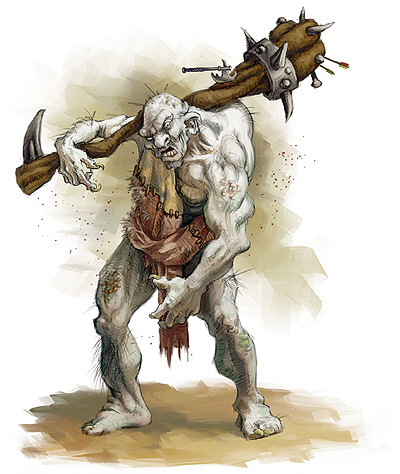Just now, I was reading an article that Leila linked to on facebook and I inadvertently let my eyes wander down to the comments section. I really try not to do this except on blogs I know and trust, because everyone knows that comments boxes are littered with loons. But for some reason, maybe lack of coffee, maybe excess of clinging children, I started perusing the comments. I came across one comment pointing out that a previous commenter was too busy attacking Catholics to defend Christianity. Curious, I scrolled up to the commenter in question’s comment. There was nothing about Catholics. So naturally, I clicked on his name, which put me through to his blog.
Ugh. Ugh doesn’t even cover it. I’ve rarely been so shocked, repulsed and nauseated by a blog, but this blog…was something else. I’ve debated whether or not I want to link to it here and have decided not to. From the quick scanning I did of this man’s horrifying writings, I’m sure no good would come of any attempt to engage in a genuine dialogue, and I’d hate to see him come visit my blog or some of your blogs.
The thing that shocked me the most wasn’t his terrible language and foul-mouthing of the Pope, the Saints, and all priests. It wasn’t the pictures depicting the Incorruptible Saints with captions calling them “Queens of Hell”. It was one picture, near the bottom, of a group of school children gathered around a statue of Pope John Paul II, with a nun in full habit shepherding them. Below it, the blogger had invoked the damnation of God upon the “filthy nun.”
Up until this point, I had been looking at the blog the way one looks at a train wreck. It was horrifying and awful, but I couldn’t not look. But when I read that comment, I snapped my browser closed and got up from the computer to pace and fume.
Immediately I began to think of Martin Luther. When the Ogre and I were dating, he was doing a huge project on Martin Luther and the Reformation. During the Reformation, some of the lay Reformers took it upon themselves to “liberate” nuns by breaking into convents and raping them. In a good Friday sermon, Martin Luther himself commended the recent brutal rape of a group of cloistered nuns as a fitting sacrifice to Christ during Easter. As Christ was killed and resurrected, he said, so these nuns had been forcibly liberated of the chains that bound them to the Catholic Church, and could now be resurrected in the truth of salvation.
I was raised Protestant. Martin Luther was a hero for me; we didn’t celebrate Halloween growing up, we dressed as Biblical figures and celebrated Reformation Day, complete with the reenaction of the nailing of the 95 Theses. I had tried to defend Luther during the Ogre’s project. The more the Ogre read, the more upset he became at the people who had ripped the Church apart. He wasn’t above admitting that the Church was in desperate need of reform at the time of the Reformation; of course it was. And he also admitted that the Reformation forced the Church to look at herself and take on some much needed changes. But the way Luther did it, the violence and hatred he encouraged toward the Church, was despicable. Is despicable. And it reverberates still, in people like this blogger who would so misguidedly invoke God’s damnation on one who has given everything, her time, her life, her love, her physical self, to serving Him.
It makes me ill. It makes me angry. And for the life of me, I can’t understand it. When I was growing up, I thought Catholics were wrong. I thought they worshiped idols, believed priests could forgive sins, worshiped Mary, and thought they had to work their way into heaven. I thought it was a whole religion full of slightly insane imbeciles.
I was wrong. Once I began to explore the Catholic religion, to figure out what they believed and why, what I began to see was cohesion. No one was sitting around saying, “Well, I think X about predestination because of my interpretation of X verse, but if you interpret it in Y way like Y pastor, you would get this conclusion. And we’re not sure who’s right.” There was a unity to Catholic thought. It made sense. The whole religion is grounded in common sense. If we honestly look, our God-given reason leads us squarely to His Church. Nothing else holds together.
Not only does it hold together, but it’s so beautiful! It’s so lovely, so magnificent, so inspiring. Nowhere else are women held in such high esteem. Nowhere else are women recognized for their unique role as creators. We are privileged to join in the creative act of God. And those of us that can’t carry a child? It’s not a curse. It’s not a punishment. It’s a blessing, a difficult and painful cross to carry, but one that will, like everything, bring us closer to God. And those remarkable sisters, those virgins who give their entire being to God? Where else in creation to we find such purity, such beauty? No other place on earth greets every child with delight and love, from the children of kings to the children of crack addicts. Every child is precious. No child is an exception to that fact. And men? The Catholic Church is one of the last places wherein men are allowed to be men. She doesn’t cut the legs out from under them and say, become more like a woman. No. The Church says that men are made in the likeness of God. Their role is to provide, to protect, to defend, in whatever way they are best suited. They are given leadership and reminded that in that privileged role, they must be as loving as Christ. Loving enough to lay down their lives.
The Church gives us the sacraments to show us God’s love on a consistent basis. Baptism washes the wound of original sin from us so that we can strive to be made whole. The vows we take are great ones indeed, yet unimaginable graces accompany them. Confession and penance are not chains by which we are bound; they are keys that unlock our shackles. The Eucharist is the blood of Life, without which we are lost. And we get all these things coupled with the gift of sensory, tactile beauty. The statues and icons speak to our souls. Kneeling reminds us to be humble and contrite. Incense elevates our senses. Music and singing raise our spirits. The weight of the Eucharist and the sting of the wine remind us of the gravity and the pain of the sacrifice that was made for us. The sacrifice that was freely given out of love for us.
There is hardly evil in this. The Church is made of sinners, it’s true, so sin is there. There is also overwhelming truth, beauty and love. How anyone can look at the Catholic Church and feel anything aside from deep, abiding gratitude and hope is beyond me.










